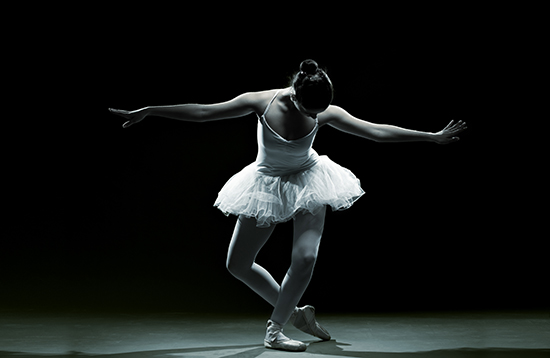For new dancers and their parents, ballet terminology can be a bit intimidating. Many of the names for moves and positions are in French – and there’s so many of them! If you or your child’s first dance class has your heads spinning, don’t stress any longer. Read on for a overview of the basic ballet moves in clear English. Don’t worry – you’ll be an expert soon!
The Basic Positions
The five basic positions form the foundation of ballet. They affect how dancers begin and end their leaps, spins, jumps – basically everything! First position is when a dancer stands with her heels touching and both feet turned away from each other – as close to horizontally as possible. For second position, the heels are placed about should-width apart, and the heels are still facing straight out to either side.
[wpsm_video]https://www.youtube.com/watch?v=Rgl1tvte3X8[/wpsm_video]
Things get a little different with the third, fourth and fifth positions. Third position is when one foot is placed in front of the other, with the midpoint or arch of the back foot touching the heel of the front foot. Fourth position is similar to third, but the front foot is moved forward so the feet are no longer touching at the heel and arch. And finally, fifth position is when the front foot is slid back so that the toes of the back foot touch the heel of the front foot.
It sounds confusing, but it’s easy to grasp after seeing the positions demonstrated a few times. Also, as the Pittsburgh Ballet Theatre notes, third position is not very commonly used these days, since the heavy turnout of modern dancers makes it look confusing similar to fifth position.
Turnout
Turnout is not a move, but it is a basic concept essential to understanding ballet. Turnout is when the legs are rotated from the hips so that both the feet and knees are turned outward. It involves a high degree of flexibility and should be used to do nearly all ballet moves.
Developpé
Developpé is when the knee is raised up to the hips, followed by an extension of the leg so that it is held in the air. A dancer can developpé to hip-height, or if they have the requisite flexibility, extend they leg to reach above their head.
Jeté
Jeté means “throwing” or “thrown,” explained Ballet Hub, and is when a dancer leaps forward, leading with one leg, and then lands on the other leg. There are many variations of jetés, some small and quick, some big and dramatic.
Fouetté
Ever been mesmerized by a dancer spinning around and around like a top? What you’re seeing is a fouetté. This move is when the dancer does a pirouette with one leg raised out to the side.
Plié
Another essential ballet movement, a plié is when both knees are bent as a dancer lowers her hips. They can be done in various positions, frequently at the barre.


